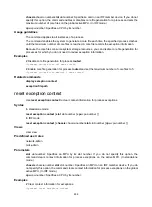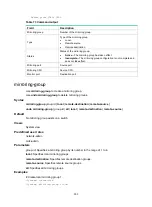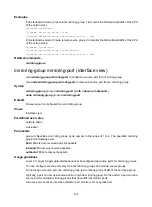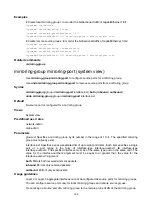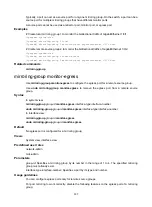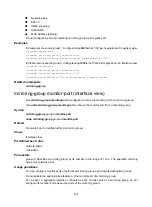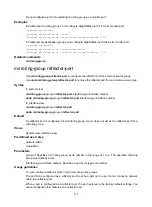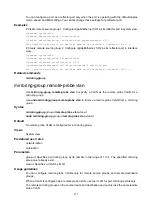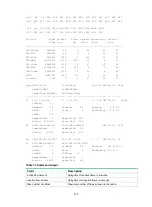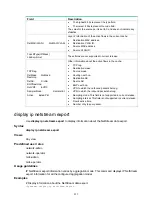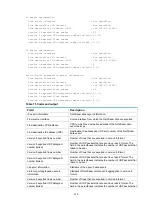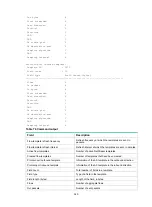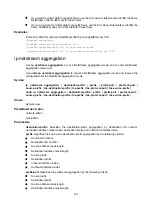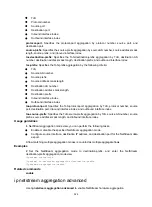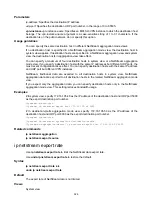
311
You can configure a port as a reflector port only when the port is operating with the default duplex
mode, speed, and MDI settings. You cannot change these settings for a reflector port.
Examples
# Create remote source group 1. Configure GigabitEthernet 1/0/1 as its reflector port in system view.
<Sysname> system-view
[Sysname] mirroring-group 1 remote-source
[Sysname] mirroring-group 1 reflector-port gigabitethernet 1/0/1
This operation may delete all settings made on the interface. Continue? [Y/N]: y
# Create remote source group 2. Configure GigabitEthernet 1/0/2 as its reflector port in interface
view.
<Sysname> system-view
[Sysname] mirroring-group 2 remote-source
[Sysname] interface gigabitethernet 1/0/2
[Sysname-GigabitEthernet1/0/2] mirroring-group 2 reflector-port
This operation may delete all settings made on the interface. Continue? [Y/N]: y
Related commands
mirroring-group
mirroring-group remote-probe vlan
Use
mirroring-group remote-probe vlan
to specify a VLAN as the remote probe VLAN for a
mirroring group.
Use
undo mirroring-group remote-probe vlan
to remove a remote probe VLAN from a mirroring
group.
Syntax
mirroring-group
group-id
remote-probe vlan
vlan-id
undo mirroring-group
group-id
remote-probe vlan
vlan-id
Default
No remote probe VLAN is configured for a mirroring group.
Views
System view
Predefined user roles
network-admin
mdc-admin
Parameters
group-id
: Specifies a mirroring group by its number in the range of 1 to 4. The specified mirroring
group must already exist.
vlan-id
: Specifies a VLAN by its ID.
Usage guidelines
You can configure remote probe VLANs only for remote source groups and remote destination
groups.
When a VLAN is configured as a remote probe VLAN, use the VLAN for port mirroring exclusively.
The remote mirroring groups on the source device and destination device must use the same remote
probe VLAN.


